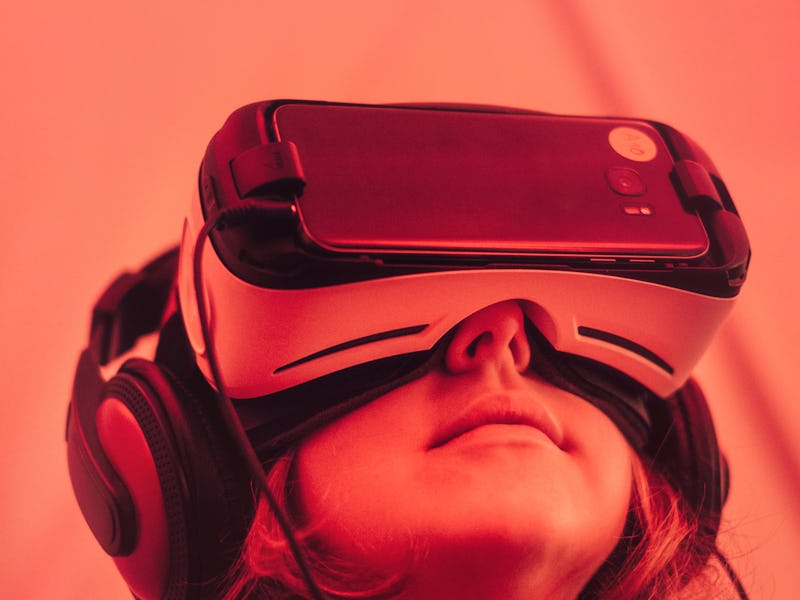VR Worlds Where You Can Actually Walk Around Are on the Way
Goodbye, room-limited HTC Vive games!

Ready to go on an infinite journey through virtual reality? Researchers at Stony Brook University, working with Nvidia and Adobe, announced on Tuesday that they’ve taken a big step toward making virtual worlds feel vast and expansive. By manipulating the eye’s natural movements, the researchers say the breakthrough could enable more fully immersive experiences where users can walk around without running into walls or other objects.
“I do believe it will get into VR devices and games in the near future,” Qi Sun, lead author of the work, tells Inverse. Sun is a former research intern at Adobe and Nvidia, and is currently studying for a PhD at Stony Brook University. “I think the eye-tracking technology today is fast and compatible enough.”
The breakthrough could bring virtual reality out of the domain of early adoption into a fully mainstream technology. While headsets like PlayStation VR, Oculus Rift and HTC Vive have brought immersive gaming experiences into homes, they depend on large spaces to allow users to move around the virtual world. While “room scale” VR allows for some maneuverability, developers are forced to include features like “teleportation” that moves the user’s avatar by pointing a controller.
“Currently in VR, it is still difficult to deliver a completely natural walking experience to VR users,” Sun said in a statement. “That is the primary motivation behind our work — to eliminate this constraint and enable fully immersive experiences in large virtual worlds.”
VR Headsets Go to the Next Level
The research focused on taking advantage of a phenomenon called saccades: quick, unconscious eye movements that happen a few times per second as the organ darts around to scan your field of vision. The brain filters out these movements in “saccadic suppression,” and it’s during these moments that the team saw a chance to influence where users walked without compromising the experience or inducing motion sickness.
The experimental setup in action.
The test system used an HTC Vive head-mounted display, paired with a SensoMotoric Instruments gaze-tracking system. The team was able to redirect users and influence their movements by moving the world faster during saccades, with no extra distortions or sickness reported. The system was able to transform a room measuring 11 feet and 5 inches square into a virtual room measuring 21 square feet. The most obvious implications are for gaming — so much more room for battling demons! — but the authors say the technology holds promise in filmmaking and educational applications as well.
“In VR, we can display vast universes; however, the physical spaces in our homes and offices are much smaller,” Qi says. “It’s the nature of the human eye to scan a scene by moving rapidly between points of fixation. We realized that if we rotate the virtual camera just slightly during saccades, we can redirect a user’s walking direction to simulate a larger walking space.”
The team created a video to show this system in action:
“The technology itself depends on user perception and actual physical size,” Sun tells Inverse. “The larger the physical space is and the more saccade (note that this behavior is inevitable) users perform, the larger virtual/physical ratio we can reach. This roughly follows a >1 order polynomial trend meaning it can almost reach infinite with a large enough physical space.”
The team will present their research, titled “Towards Virtual Reality Infinite Walking: Dynamic Saccade Redirection,” at the 2018 SIGGRAPH conference. The 45th annual conference on computer graphics is being held this year from August 12-16 at the Vancouver Convention Centre.